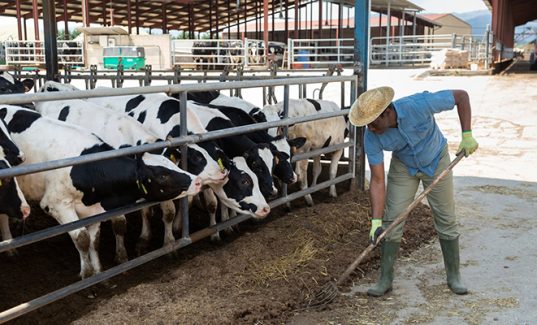Slowing demand and growing supplies are leading to cheaper prices for alfalfa hay this year, but weather, winterkill, and drought concerns could lower production in 2015.
“The good news is the U.S. carryover is up significantly from a couple of years ago,” said Dan Undersander, extension forage specialist with the University of Wisconsin, Madison. “Those producers who had winterkill this year will still be in better shape then those who had winterkill a couple of years ago because the affected area, percentage-wise, is not as large.”
Last year’s 61.45-million-ton production of alfalfa and alfalfa mixtures beat the previous year’s totally by 7 percent, according to USDA’s Crop Production report.
Winterkill Strategies for Illinois, Minnesota, and Wisconsin
According to Undersander, this year brought significant areas of winterkill in northern Illinois, in a band that stretches east from Eau Claire, Wis., into central Wisconsin, and in portions of central Minnesota. He recommends that producers seed oats and peas over affected stands to help replace first-cutting alfalfa.
“There are thin stands, death, and heaving,” Undersander said. “All of those stands are dying or are going to die.” The sooner producers reseed them, he said, the better this year’s and next year’s yields will be.
Soil moisture is also a challenge. Much of the Midwest is mired in abnormally dry or drought conditions. “We need to do a little catch up in terms of moisture,” Undersander said.
Lower Demand in the Great Plains
Kansas and Nebraska are also in need of rainfall, but there are other factors: Last year’s hay carryout is ample, and prices are falling due to reduced demand from feedlots and dairies. Lower corn prices allowed Kansas feedlots to reduce their use of alfalfa, and give their livestock a combination of lower quality roughages, such straw or milo stocks, and wet distiller’s grains. Cattle numbers are also just starting to build after the severe herd contraction in recent years.
How far have prices slipped? Last April, top dairy hay sold for $220 to $240 per ton in Kansas. Today, that same hay would cost $185 to $220 per ton. Prices for grinding hay is also lower, falling from $140 to $160 per ton in 2014 to $110 to $120 per ton today, according to Steve Hessman, the Kansas alfalfa reporter for Hay Market News and the Kansas Department of Agriculture.
That doesn’t matter to pests. In Kansas and Nebraska, growers are still several weeks away from the first cutting, but they’re already dealing with aphids, weevils, and armyworms. “On dryland, it’s hard to spend money to kill the bugs when the hay is going to dry up anyway,” Hessman said.
California’s Drought
But the dryness in the Midwest and Great Plains pales in comparison to California, nearly all of which is in extreme to exceptional drought, according to the U.S. Drought Monitor Index.
It has led to water restrictions that are expected to affect alfalfa hay production in the state.
“We don’t know the full impact of the drought on alfalfa markets and prices,” admits Seth Hoyt of the Hoyt Report. “In 2014, California was able to produce more alfalfa than we originally thought using well and groundwater. It looks like production will be down this year, but it will depend on how much groundwater they get.”
Currently, supplies of lesser quality hay remain plentiful and stockpiles of high quality hay are holding steady—at least for now. Dairies make up 65 percent of the demand base for alfalfa in the West and 75 percent in California, but with milk prices softening, dairies may make some changes to their operations.
“Demand [for hay] is down significantly from a year ago,” said Hoyt. “In another month or two we will have a better idea” where the hay market may be headed.
By Fran Howard
Source: AgWeb.com




